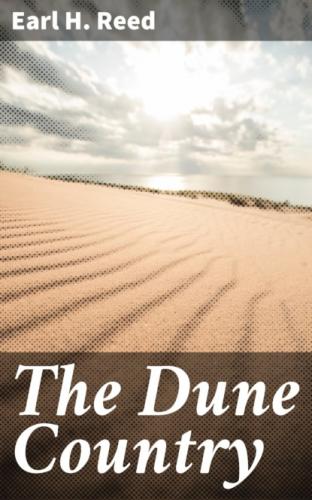Earl H. Reed
The Dune Country
Published by Good Press, 2019
EAN 4064066214661
Table of Contents
CHAPTER II THE GULLS AND TERNS
(From the Author’s Etching) HAPPY CAL’S SHANTY CHAPTER VI HAPPY CAL
The Home of “Catfish John” CHAPTER VII CATFISH JOHN
The Mysterious Tracks CHAPTER IX THE MYSTERIOUS PROWLER
CHAPTER X J. LEDYARD SYMINGTON
CHAPTER XII JUDGE CASSIUS BLOSSOM
CHAPTER XIII THE WINDING RIVER
INTRODUCTION
THE text and illustrations in this book are intended to depict a strange and picturesque country, with some of its interesting wild life, and a few of the unique human characters that inhabit it.
The big ranges of sand dunes that skirt the southern and eastern shores of Lake Michigan, and the strip of sparsely settled broken country back of them, contain a rich fund of material for the artist, poet, and nature lover, as well as for those who would seek out the oddities of human kind in by-paths remote from much travelled highways.
In the following pages are some of the results of numerous sketching trips into this region, covering a series of years. Much material was found that was beyond the reach of the etching needle or the lead pencil, but many things seemed to come particularly within the province of those mediums, and they have both been freely used.
While many interesting volumes could be filled by pencil and pen, this story of the dunes and the “back country” has been condensed as much as seems consistent with the portrayal of their essential characteristics.
We are lured into the wilds by a natural instinct. Contact with nature’s forms and moods is a necessary stimulant to our spiritual and intellectual life. The untrammelled mind may find inspiration and growth in congenial isolation, for in it there are no competitive or antagonistic influences to divert or destroy its fruitage.
Comparatively isolated human types are usually more interesting, for the reason that individual development and natural ruggedness have not been rounded and polished by social attrition.
Social attrition would have ruined “old Sipes,” a part of whose story is in this book, and if it had ever been mentioned to him he probably would have thought that it was something that lived up in the woods that he had never seen.
Fictitious names have, for various reasons, been substituted for some of the characters in the following chapters. One of the old derelicts objected strenuously to the use of his name. “I don’t want to be in no book,” said he. “You can draw all the pitchers o’ me you want to, an’ use ’em, but as fer names, there’s nothin’ doin’.”
“Old Sipes” suggested that if “Doc Looney’s pitcher was put in a book, some o’ them females might see it an’ locate ’im,” but as the “Doc” has now disappeared this danger is probably remote.
E. H. R.
THE DUNE COUNTRY
WHILE there are immense stretches of sand dunes in other parts of the world, it is of a particular dune country, to which many journeys have been made, and in which many days have been spent, that this story will be told.
The dunes sweep for many miles along the Lake Michigan coasts. They are post-glacial, and are undergoing slow continual changes, both in form and place—the loose sand responding lightly to the action of varying winds.
The “fixed dunes” retain general forms, more or less stable, owing to the scraggly and irregular vegetation that has obtained a foothold upon them, but the “wandering dunes” move constantly. The fine sand is wafted in shimmering veils across the smooth expanses, over the ridges to the lee slopes. It swirls in soft clouds from the wind-swept summits, and, in the course of time, whole forests are engulfed. After years of entombment, the dead trunks and branches occasionally reappear in the path of the destroyer, and bend back with gnarled arms in self-defence, seeming to challenge their flinty foe to further conflict.
The general movement is east and southeast, owing to the prevalence of west and northwest winds in this region, which gather force in coming over the waters of the lake. The finer grains, which are washed up on the beach, are carried inland, the coarser particles remaining near the shore. The off-shore winds, being broken by the topography of the country, exercise a less but still noticeable influence. The loose masses retreat perceptibly toward the beach when these winds prevail for any great length of time.
To many this region simply means a distant line of sandy crests, tree-flecked and ragged, against the sky on the horizon—a mysterious and unknown waste, without commercial value, and therefore useless from a utilitarian standpoint.
It is not the land, but the landscape, not the utility, but the romantic and interesting wild life among these yellow ranges that is of value. It is the picturesque and poetic quality that we find in this land of
